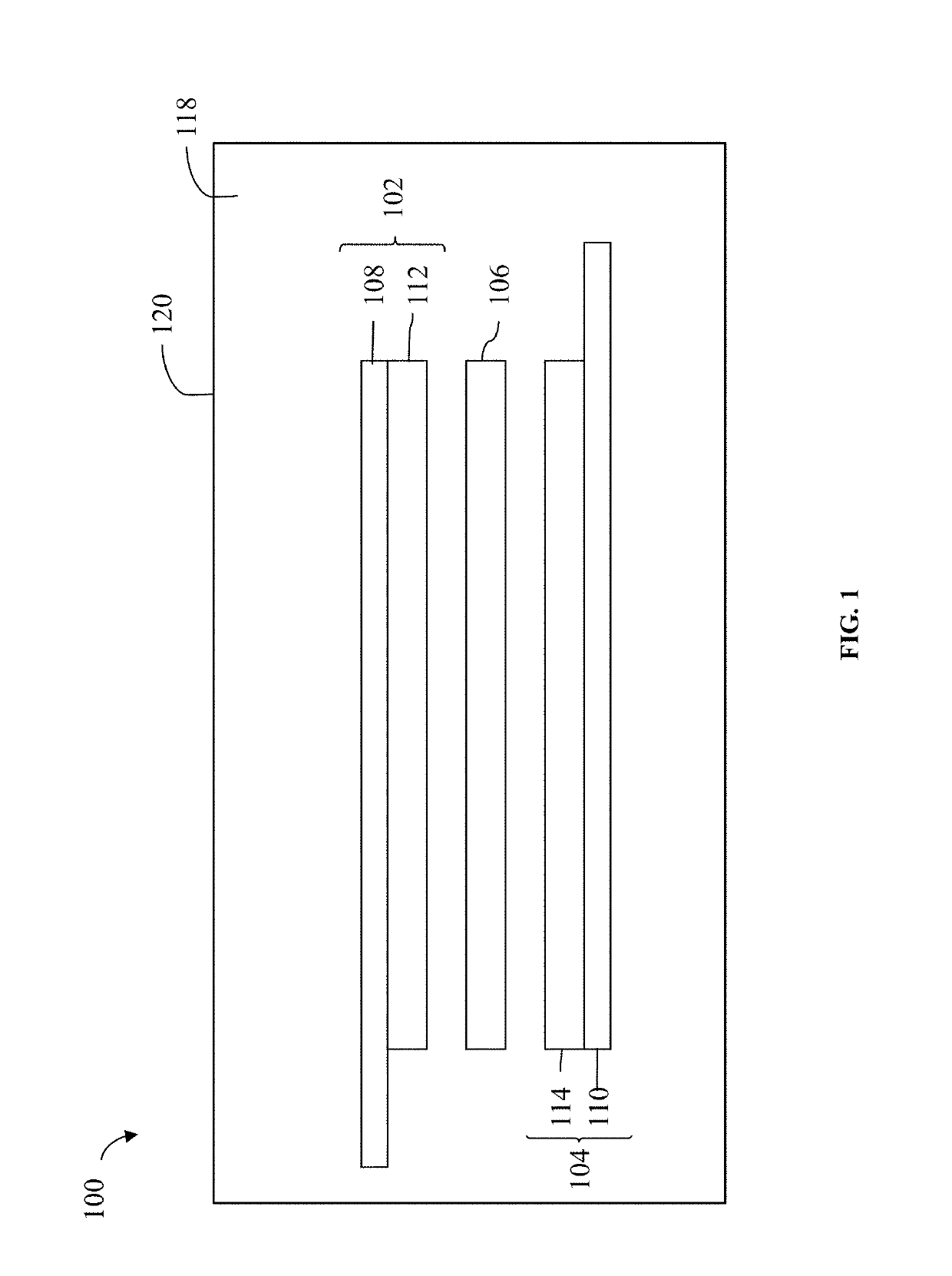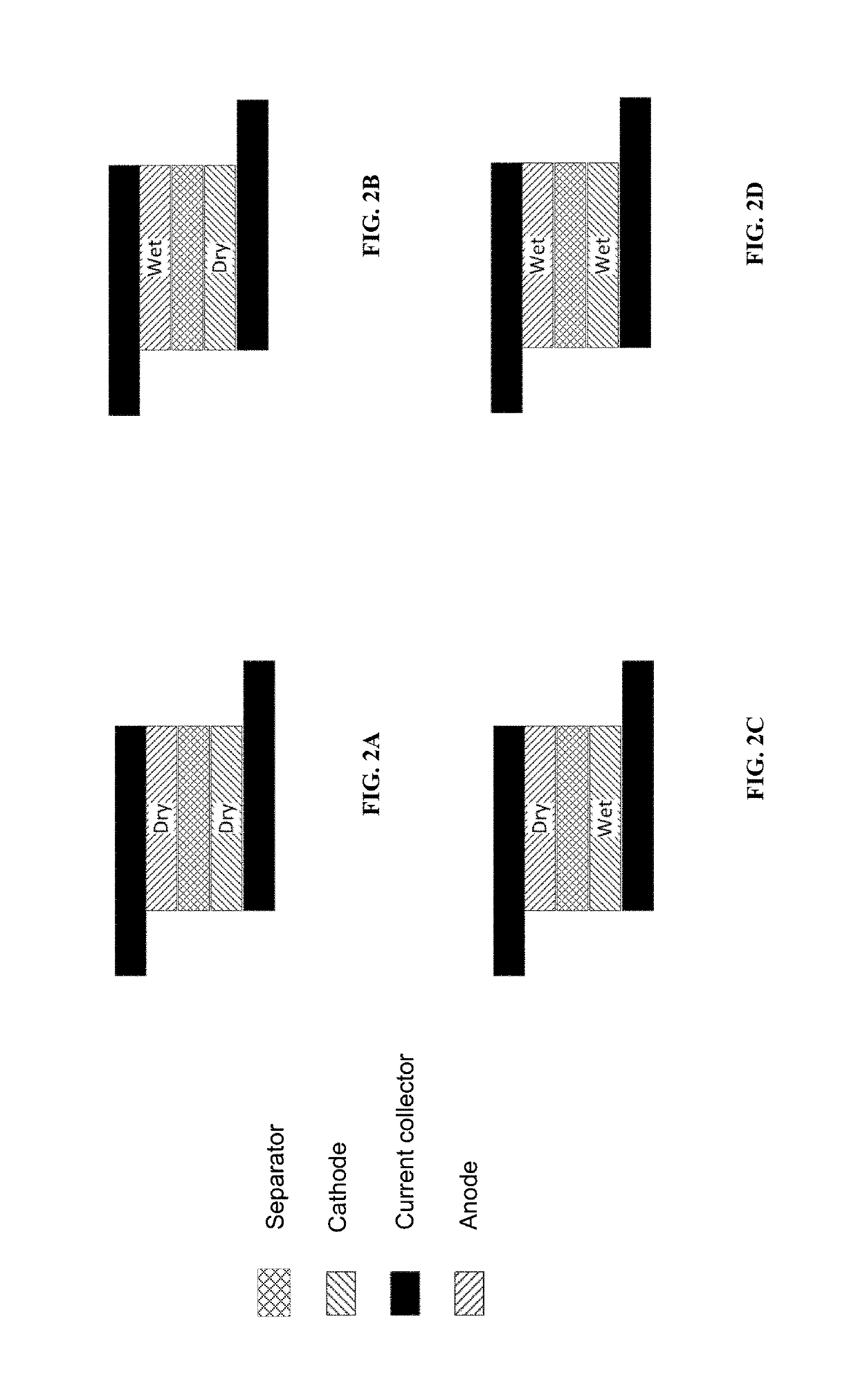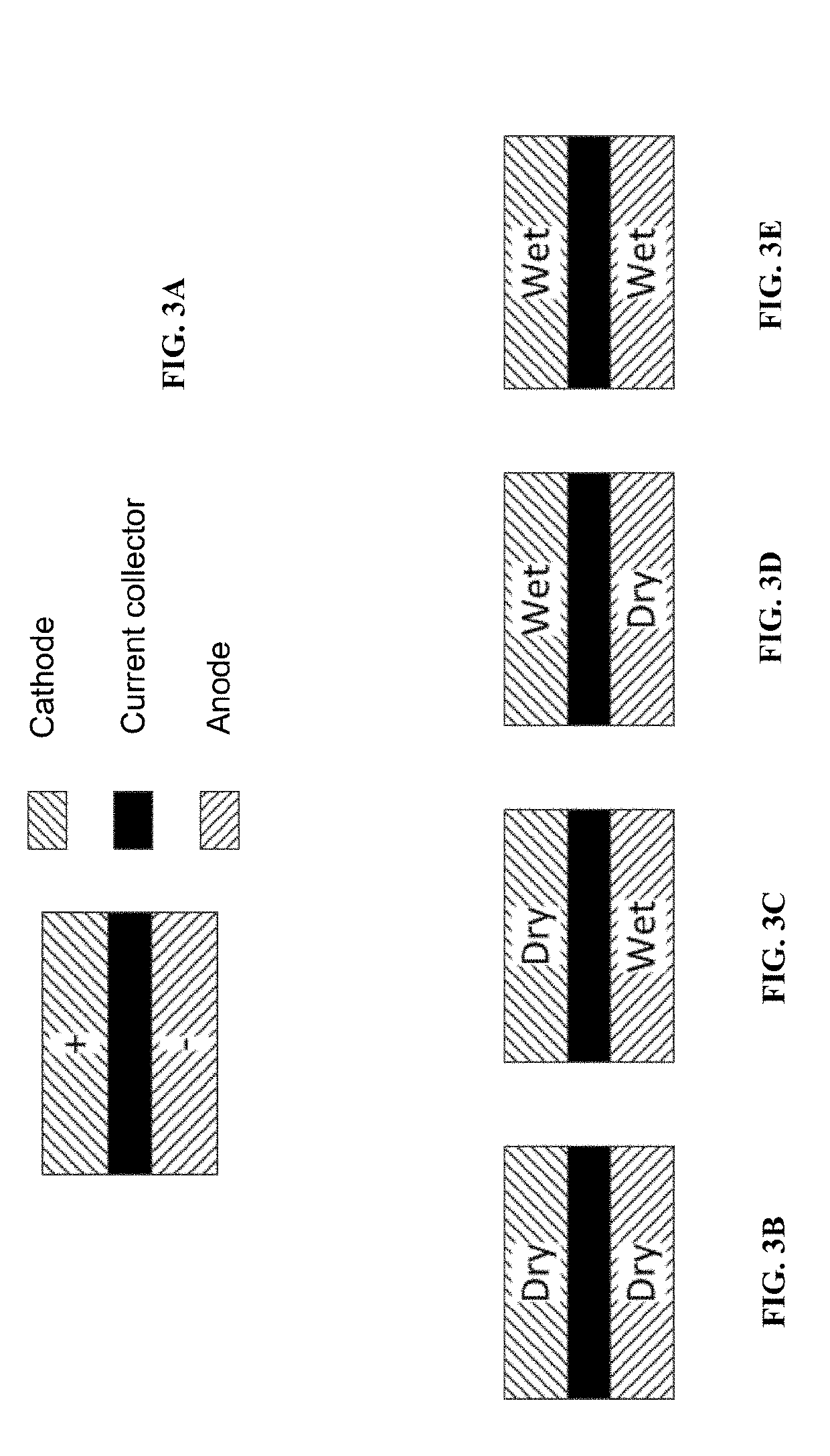Compositions and methods for energy storage devices having improved performance
a technology of energy storage devices and materials, applied in the direction of nickel oxides/hydroxides, cell components, electrochemical generators, etc., can solve the problems that the existing method of fabrication may impose a practical limit to various structural electrode properties, and not all such objects or advantages may be achieved
- Summary
- Abstract
- Description
- Claims
- Application Information
AI Technical Summary
Benefits of technology
Problems solved by technology
Method used
Image
Examples
example 1
ctrodes
[0100]Dry battery anodes were fabricated, which included 96% by weight graphite and 4% by weight binder, wherein the binder included 2% PTFE, 1% CMC and 1% PVDF by weight totaling the 4% of binder by weight. Cathodes were also fabricated in a dry process, the cathodes including 94% by weight NMC622, 3% by weight conductive additive, and 3% by weight polymer binder. In addition, wet process electrodes were fabricated having the following compositions: the wet process anode included 95.7% by weight graphite, 1% conductive additive, and 3.3% by weight polymer binders, and the wet process cathode included 91.5% by weight active component and 4.4% by weight conductive additive and 4.1% by weight polymer binder. Other electrode film compositions can be envisioned and prepared, and the disclosure herein is not limited to the specific compositions disclosed.
[0101]Four lithium ion batteries were assembled, following the scheme of Table 1. Each lithium ion battery of Table 1 was tested...
example 2
Electrode Specific Capacity
[0110]Table 3 provides the electrode specifications for thick NMC622 cathode and thick graphite anode. The NMC622 cathode is composed of 94 wt % NMC622, 2 wt % porous carbon, 1 wt % conductive carbon and 3 wt % PTFE. The graphite anode is composed of 96 wt % graphite, 1.5 wt % CMC, 0.5 wt % PVDF and 2 wt % PTFE. The half-cell 1st cycle results are captured in FIGS. 12 and 13 for dry NMC622 and graphite electrode, respectively. The half-cell in FIG. 12 was charged at room temperature at a constant current of C / 20 to a 4.3V cutoff, then a constant voltage to a C / 40 cutoff, and then discharged at room temperature at a constant current of C / 20 to a 2.7V cutoff. The half-cell in FIG. 13 was charged at room temperature at a constant current of C / 20 to a 5 mV cutoff, then a constant voltage to a C / 40 cutoff, and the discharged at room temperature at a constant current of C / 20 to a 2V cutoff. The first cycle specific discharge capacity for both polarities exceeds ...
example 3
ctrode Charge and Discharge Performance
[0112]FIGS. 15A and 15B provide the discharge rate voltage profiles for dry and wet coated electrodes, respectively. The active material used in both coating technologies are NMC622 for the cathode and graphite for the anode. The wet NMC622 cathode is composed of about 92 wt % NMC622, 4 wt % conductive carbon and 4 wt % PVDF. The wet NMC622 cathode was formed with a 41.0 mg / cm2 loading, which gave a 155 μm thick film, a 36% porosity, and a 2.66 g / cm3 electrode film density. The wet graphite anode is composed of about 96 wt % graphite, 1 wt % conductive carbon and 3 wt % CMC / styrene-butadiene binder. The wet graphite anode was formed with a 24.5 mg / cm2 loading, which gave a 182 μm thick film, a 37.5% porosity, and a 1.35 g / cm3 electrode film density.
[0113]The dry NMC622 cathode is composed of about 95 wt % NMC622, 2 wt % porous carbon, 1 wt % conductive carbon and 2 wt % PTFE. The dry graphite anode is composed of about 96 wt % graphite, 1 wt % ...
PUM
| Property | Measurement | Unit |
|---|---|---|
| thickness | aaaaa | aaaaa |
| porosity | aaaaa | aaaaa |
| density | aaaaa | aaaaa |
Abstract
Description
Claims
Application Information
 Login to View More
Login to View More - R&D
- Intellectual Property
- Life Sciences
- Materials
- Tech Scout
- Unparalleled Data Quality
- Higher Quality Content
- 60% Fewer Hallucinations
Browse by: Latest US Patents, China's latest patents, Technical Efficacy Thesaurus, Application Domain, Technology Topic, Popular Technical Reports.
© 2025 PatSnap. All rights reserved.Legal|Privacy policy|Modern Slavery Act Transparency Statement|Sitemap|About US| Contact US: help@patsnap.com



